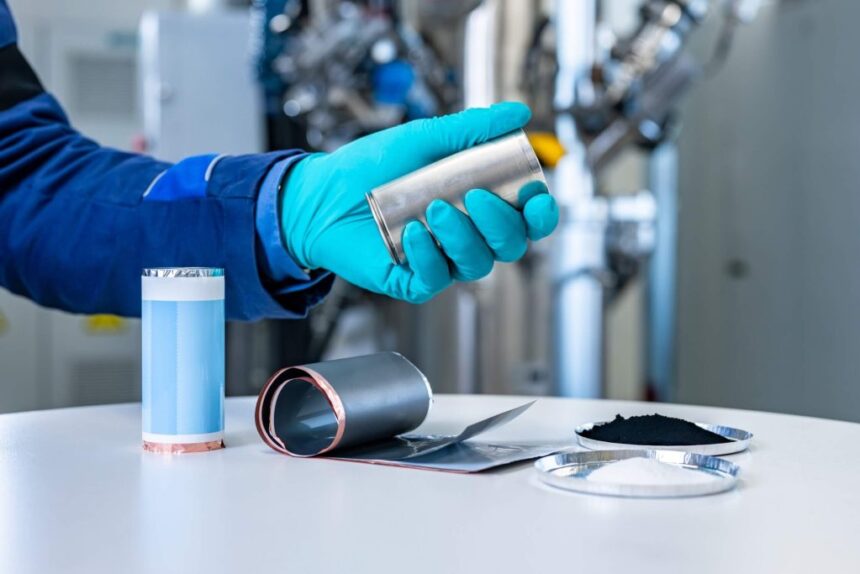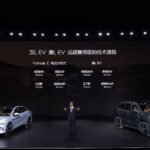Solid-State Electrolyte Membranes: A Game-Changer in Lithium Harvesting
Solid-state electrolyte membranes revolutionize lithium harvesting with near-perfect selectivity
In the quest to meet the soaring global demand for lithium, a crucial element in electric vehicle batteries, researchers at Rice University’s Elimelech lab have introduced a groundbreaking lithium extraction technique that has the potential to revolutionize the industry.
Published in Science Advances, their study showcases the near-perfect selectivity of lithium by repurposing solid-state electrolytes (SSEs) as membrane materials for aqueous lithium extraction. Originally designed for efficient lithium ion conduction in solid-state batteries, SSEs’ structured and confined nature allows for remarkable separation of ions and water in aqueous mixtures.
This breakthrough could lead to a sustainable resource recovery method that reduces reliance on environmentally damaging traditional mining and extraction practices.
“The challenge lies not only in increasing lithium production but in doing so sustainably and economically,” stated corresponding author Menachem Elimelech, the Nancy and Clint Carlson Professor of Civil and Environmental Engineering.
To enhance the environmental sustainability of lithium extraction, researchers have explored direct extraction technologies that recover lithium from unconventional sources like oil- and gas-produced water, industrial wastewater, and geothermal brines. However, these methods have struggled with ion selectivity, especially in separating lithium from similar ions like magnesium and sodium.
The innovative approach developed by Elimelech’s team relies on the fundamental difference between SSEs and traditional nanoporous membranes. While conventional membranes transport ions through hydrated nanoscale pores, SSEs facilitate lithium ion transport through a unique anhydrous hopping mechanism within a highly ordered crystalline lattice.
“This allows lithium ions to pass through the membrane while blocking other ions and water effectively,” explained first author Sohum Patel, now a postdoctoral researcher at the Massachusetts Institute of Technology. “The exceptional selectivity of our SSE-based method makes it highly efficient for lithium harvesting, as energy is solely used to transport lithium ions across the membrane.”
Through an electrodialysis setup, the research team, including Arpita Iddya, Weiyi Pan, and Jianhao Qian, demonstrated near-perfect lithium selectivity even at high concentrations of competing ions. The SSE membrane consistently showed no detectable competing ions in the product stream, a feat unattainable by conventional membrane technologies.
By combining computational and experimental techniques, the team uncovered the reasons behind the SSEs’ extraordinary lithium ion selectivity. The tightly packed crystalline lattice of the SSE prevented water molecules and larger ions like sodium from passing through, while magnesium ions with a different charge were also rejected due to incompatibility with the crystal structure.
“The lattice acts as a molecular sieve, allowing only lithium ions to permeate,” elucidated Elimelech. “This precise size and charge exclusion make the SSE membrane truly unique.”
Although competing ions hindered lithium flux by blocking surface sites for ion exchange, the researchers believe this challenge can be addressed through further material engineering.
As lithium shortages loom, industries reliant on lithium-ion batteries are seeking additional sources and sustainable extraction methods. SSE-based membranes could play a pivotal role in securing a stable lithium supply without the environmental impact of traditional mining.
“Integrating SSEs into electrodialysis systems could facilitate direct lithium extraction from various aqueous sources, minimizing the need for evaporation ponds and chemical-intensive purification steps,” noted Patel. “This could significantly reduce the environmental footprint of lithium production while enhancing efficiency.”
Furthermore, the findings suggest broader applications for SSEs beyond lithium in ion-selective separations.
“The ion selectivity mechanisms in SSEs could inspire the development of similar membranes for extracting other essential elements from water sources, opening avenues for a new class of membrane materials for resource recovery,” added Elimelech.







